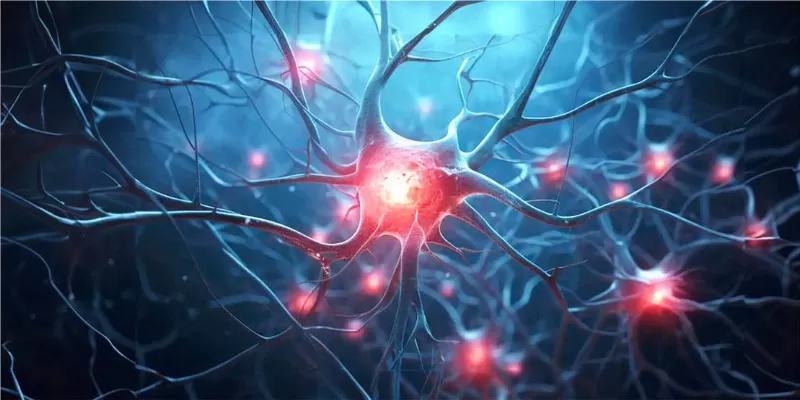3D Model Research Offers New Treatment Options for Alzheimer's Disease

29 August 2023
In a significant leap forward in Alzheimer's disease (AD) research, scientists from Massachusetts General Hospital (MGH) have developed a groundbreaking 3D cellular model. This model, based on cutting-edge microfluidic technology, has shone a light on the intricate interactions between brain cells and specific immune cells, offering promising pathways for potential new treatments. The study, published in Nature Neuroscience, reveals that as Alzheimer's pathology increases in brain, specific immune cells, CT8+ T Cells, intensify neuroinflammation.
The team identified a key pathway, between chemokine CXCL10 and chemokine receptor CXCR3, that controls T cell brain infiltration. Blocking this pathway prevented T cell infiltration and neurodegeneration in AD models. This discovery suggests potential new therapeutic targets for AD, focusing on limiting immune cell infiltration, potentially reducing the disease's cognitive effects.
The Insight into T Cells
Central to the team's findings is the role of the CT8+ T Cells. These immune cells, typically found outside the brain, have been shown to significantly amplify the damage caused by Alzheimer's. As AD pathology builds up, these T cells storm into the brain, exacerbating neuroinflammation and heightening the damage. The team's 3D human neuroimmune axis model, an extension of prior research, presents a meticulous depiction of how these immune cells interact with Alzheimer's-affected brain cells.
"Enabled by cutting-edge microfluidic technology, this model opens up a window to observe infiltrating peripheral immune cells in action within 3D cell cultures; their interactions with brain cells; and their impact on neuroinflammation and neurodegeneration," says co-lead author Mehdi Jorfi, PhD, instructor in Neurology at MGH.
Discovering Potential Treatment Pathways
A significant part of the study was identifying a molecular pathway between a chemokine (CXCL10) and chemokine receptor (CXCR3). This pathway is crucial for the infiltration of T cells into the Alzheimer's brain. By blocking this route, the researchers saw a marked reduction in T cell infiltration, pointing to a potential strategy to deter the neurodegenerative effects of AD.

Rudolph Tanzi, Ph.D., director of the Genetics and Aging Research Unit at MGH, shared the team's excitement, emphasizing that they've identified a new drug target on the T cells. This is crucial because these cells are outside of the brain, making them a more accessible target for treatments, especially considering the challenges of delivering drugs to the brain.
“Perhaps, what is most exciting about this study is that we have identified a new drug target on T cells, outside of the brain, which would be more accessible to novel treatments, especially since it has been traditionally difficult to get drugs into the brain,”
Towards a Brighter Future
This multidisciplinary approach to research brings hope for more effective Alzheimer's treatments. As the team continues their work with this 3D model, more therapeutic targets may emerge, potentially leading to interventions that reduce the cognitive impacts of AD. The study, published in Nature Neuroscience, was led by co-authors Mehdi Jorfi, Ph.D., Joseph Park, Ph.D., and Doo Yeon Kim, Ph.D., among others.
Abstract of original research
Infiltrating CD8+ T cells exacerbate Alzheimer’s disease pathology in a 3D human neuroimmune axis model
Abstract: Brain infiltration of peripheral immune cells and their interactions with brain-resident cells may contribute to Alzheimer’s disease (AD) pathology. To examine these interactions, in the present study we developed a three-dimensional human neuroimmune axis model comprising stem cell-derived neurons, astrocytes and microglia, together with peripheral immune cells. We observed an increase in the number of T cells (but not B cells) and monocytes selectively infiltrating into AD relative to control cultures. Infiltration of CD8+ T cells into AD cultures led to increased microglial activation, neuroinflammation and neurodegeneration. Using single-cell RNA-sequencing, we identified that infiltration of T cells into AD cultures led to induction of interferon-γ and neuroinflammatory pathways in glial cells. We found key roles for the C-X-C motif chemokine ligand 10 (CXCL10) and its receptor, CXCR3, in regulating T cell infiltration and neuronal damage in AD cultures. This human neuroimmune axis model is a useful tool to study the effects of peripheral immune cells in brain disease.











Comments
No Comments Yet!